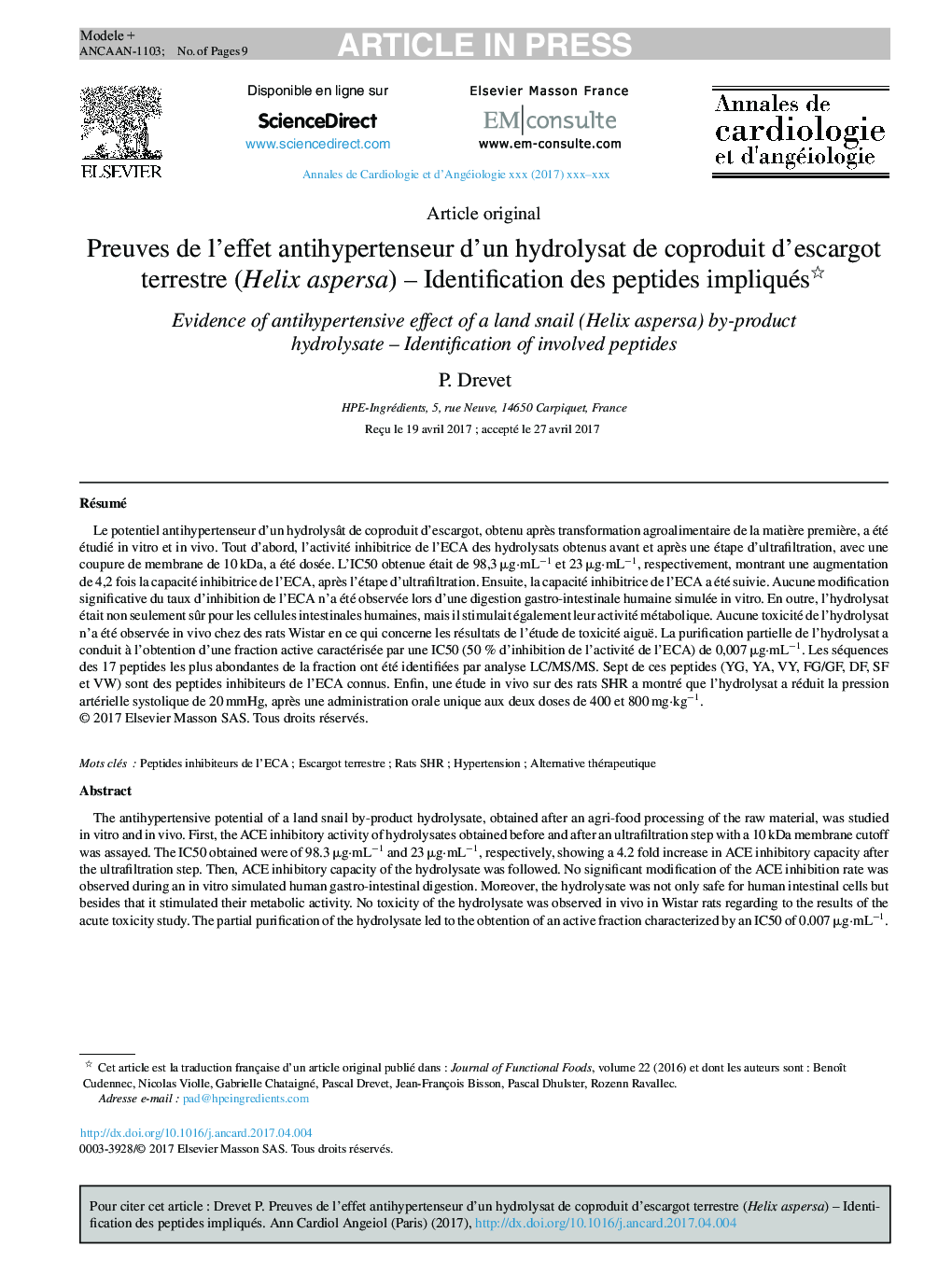| Article ID | Journal | Published Year | Pages | File Type |
|---|---|---|---|---|
| 5596468 | Annales de Cardiologie et d'Angéiologie | 2017 | 9 Pages |
Abstract
The antihypertensive potential of a land snail by-product hydrolysate, obtained after an agri-food processing of the raw material, was studied in vitro and in vivo. First, the ACE inhibitory activity of hydrolysates obtained before and after an ultrafiltration step with a 10 kDa membrane cutoff was assayed. The IC50 obtained were of 98.3 μg·mLâ1 and 23 μg·mLâ1, respectively, showing a 4.2 fold increase in ACE inhibitory capacity after the ultrafiltration step. Then, ACE inhibitory capacity of the hydrolysate was followed. No significant modification of the ACE inhibition rate was observed during an in vitro simulated human gastro-intestinal digestion. Moreover, the hydrolysate was not only safe for human intestinal cells but besides that it stimulated their metabolic activity. No toxicity of the hydrolysate was observed in vivo in Wistar rats regarding to the results of the acute toxicity study. The partial purification of the hydrolysate led to the obtention of an active fraction characterized by an IC50 of 0.007 μg·mLâ1. The sequences of the 17 most abundant peptides of the fraction were identified by LC/MS/MS analysis. Seven of these peptides (YG, YA, VY, FG/GF, DF, SF and VW) are known ACE inhibitory peptides. Finally, in vivo study on SHR rats showed that the hydrolysate reduced systolic blood pressure by 20 mmHg after a single oral administration at both doses of 400 and 800 mg·kgâ1.
Related Topics
Health Sciences
Medicine and Dentistry
Cardiology and Cardiovascular Medicine
Authors
P. Drevet,
